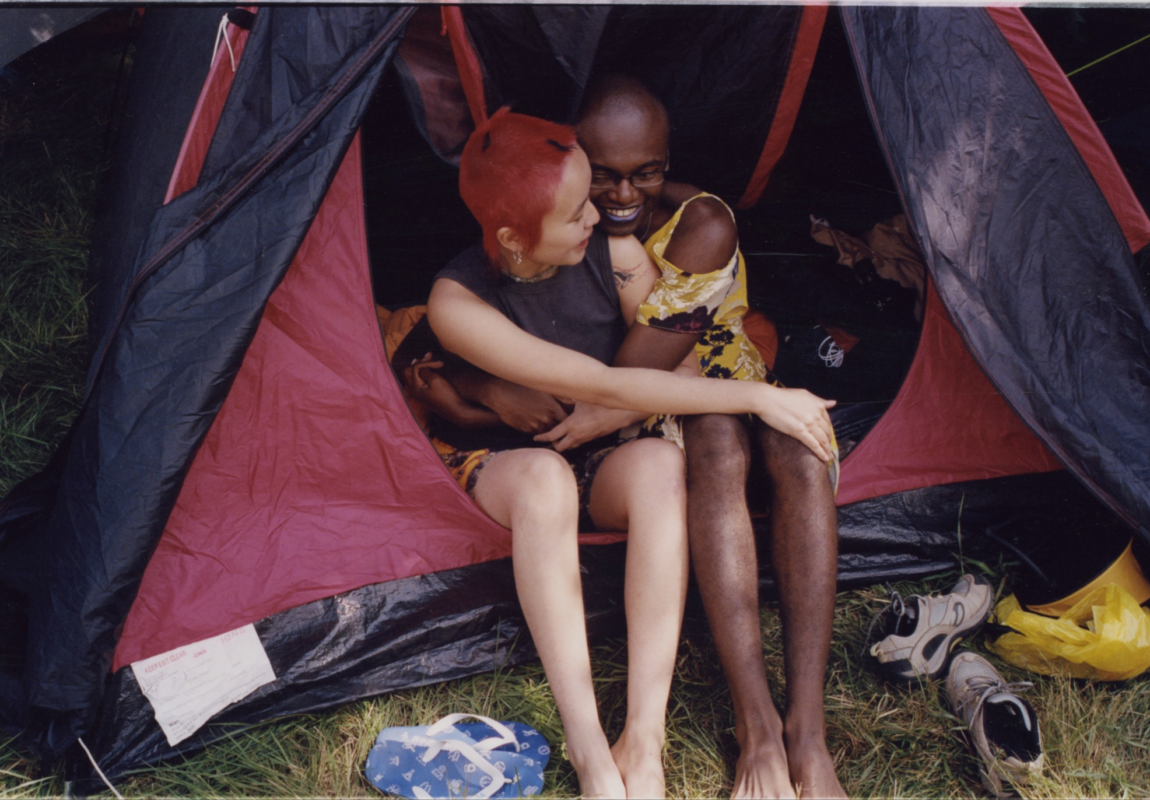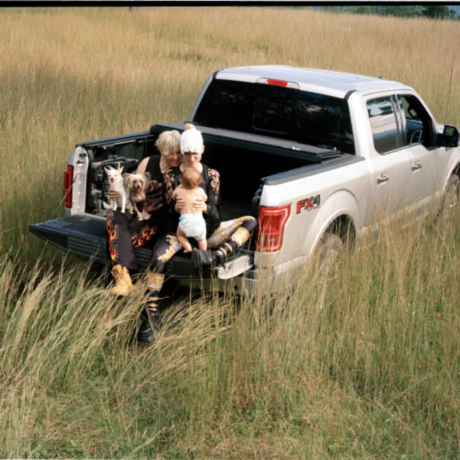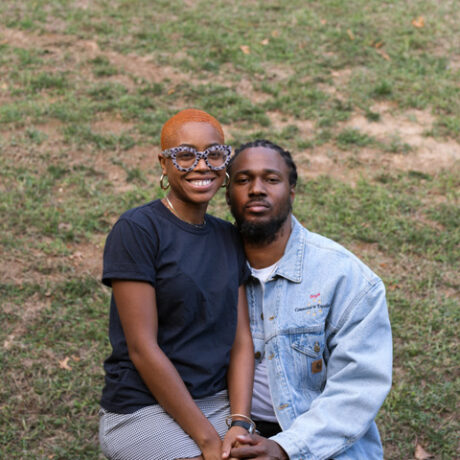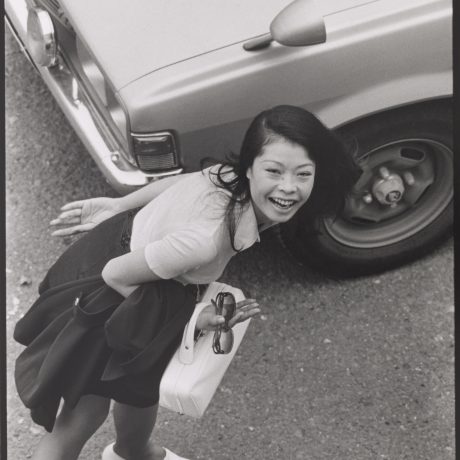
Catching a glimpse into the lives of his closest circle, the London-based photographer’s debut solo show is a manifesto of care, affection and intimacy
A couple embraces candidly sitting at the edge of a tent in one of the photographs part of Jesse Glazzard’s first-ever solo show, For Love or Nothing. Thrown on a patch of grass, their shoes, flip-flops and a bright yellow air pump as well as the everyday objects visible in the background — a pair of headphones, some scattered clothing and unwrapped sleeping bags — hint at the moments that preceded the shot and the tender dimension absorbing its protagonists: maybe they have camped there overnight and they have just woken up. Perhaps, they are seeking refuge in the shadow from the peak of a heatwave or, instead, they are just resting up ahead of a day filled with music and people at one of the many festivals constellating the British summer season. Whether partially accurate or completely incorrect, all of my assumptions on the image lensed by London-based photographer prove one thing: that his work offers a gateway into the lives of those it portrays, a vantage point from which to wonder about and scrutinise the subtle details and deep connection shaping the experiences of his loyal social circle — a recurring subject in his visual practice.

Launched on 1 November at 10 14 Gallery, Dalston, For Love or Nothing speaks of Glazzard’s uncompromising understanding of love. “I met with the gallery’s curator and special projects manager Jamie Shaw and he was really keen to work on something together in the space,” the image-maker says of the inception of the exhibition, which took shape from a very natural process. With its title, “I was trying to encapsulate how I exist,” he adds. “If I love something, I am either all in or not in at all — I guess For Love or Nothing embodies that feeling: it is an extension of the love I have for the people I choose to shoot.”
Curated and presented by Pacheanne Anderson, a platform dedicated to centring Black and PoC as well as queer and trans artists, the show gathers a collection of images charting the spectrum of care, affection and intimacy. Open through 30 November, the exhibition encourages viewers to ponder the infinite shades in which such emotions present themselves between friends and lovers, whether in platonic or romantic unions, thus documenting a symbolically charged place “where space is shared and held in times of transformation and joy”. Throughout the event, we see couples unwinding in the great outdoors, vividly rendered domestic settings acting as a metaphor for the personal sphere, people holding tight to their loved ones or, else, uniquely manifesting their bond through reassuring body language and attentive gestures.
Still, despite the hazy, sun-kissed atmosphere of many of the images on display, nothing catches my eye as two black-and-white self-portraits currently on view at the East Photographic-powered exhibition space. In one of them, also printed on the poster of For Love or Nothing, Glazzard stares straight into the camera wrapped around the torso of an anonymous figure whose face is tucked behind his shoulders. He holds a remote shutter release control in his left hand as his right hand clasps gently the back of the other subject. Emerging from the bright white backdrop of the image are beauty products and objects embodying ritual — a candle and what looks like perfume and moisturiser bottles. In the second photograph, Glazzard sits in a bathtub as his partner fixes his hair. He smiles and his eyes are closed, which conveys a sense of unconditional trust between the two figures portrayed in this shot.

In both of these portraits, I feel the photographer’s desire to see and represent himself in direct relation to and symbiosis with the people that fill his days. Even more than that, Glazzard’s latest series of photographs appears to deliberately shy away from the exploration of identity that characterised his earlier works to focus, first and foremost, on the chapter that started following his top surgery recovery. By voluntarily redirecting his gaze from his transition onto the everyday of his present situation, the image-maker wants to inaugurate a new beginning while honouring the emotional and physical support of those who have contributed to make it possible.
Looking back at the opening night of For Love or Nothing, Glazzard explains that he couldn’t help but feel concerned about the extent to which his friends would feel seen in the images. “Ultimately, the show is about relationships, and I wanted the work to be true to those,” he says. “At some point, there was a queue to get in, which made me realise that the series itself had grown outside of me.” Having already lent his eye to some of today’s most exciting culture publications and fashion brands, Glazzard’s professional journey has only just begun. Yet, if there is anything the photographer has learnt thanks to this first solo exhibition, it is that valuing and nurturing his personal work is the only way forward. “I often get one commercial job a month to survive, which means I am forced to make all my personal projects around that,” he says. “With the obsessiveness that comes with shooting and being in the dark room all the time, it can get hard to find a way to also be in the real world, outside of the digital realm and the pressure arising from work commitments.”

If For Love or Nothing casts a light on Glazzard’s personal and professional evolution by sparking reflection on the role that love — intended in its most comprehensive definition — plays in our lives, the exhibition has also shown him how to take his craft into its next stage. “In the future, I think it will be important for me to show more hardness in my intimate settings,” the image-maker says. “It is crucial to know that love can extend beyond softness and bodies, which is something I am looking forward to exploring in the coming years.” Because as the press release of the showcase reads, “there is no love without loss, no change without grief”.
Words by Gilda Bruno





